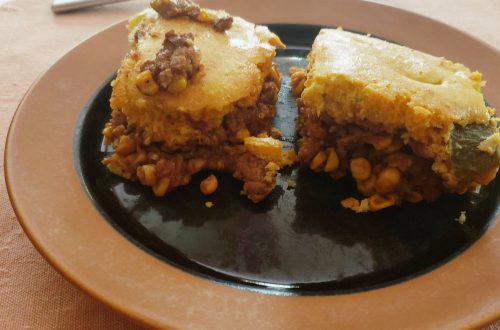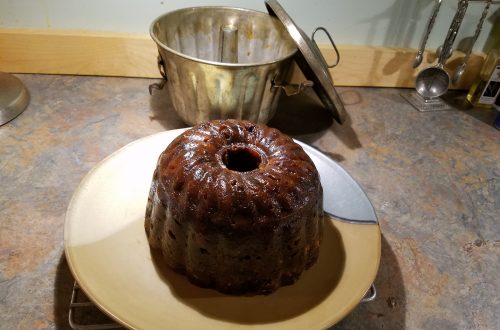
Sweet on Sweet Potatoes
From your email, please click on the title to view the photos and comment online. On the Website, you can read past blogs, search for recipes, and browse.
A comment from a loyal reader sent me on an interesting odyssey this week concerning the sweet potato. My friend Mercy, who’s from Kenya, mentioned recently that she eats sweet potatoes for breakfast, and grew up eating them. That started me wondering how this nutritious, but often-ignored vegetable works its way into cuisines around the world. What I learned this week reinforced my appreciation for the way that foods and peoples migrated around the world.
Turns out Kenya’s cuisine story is as old as the first humans in East Africa as tribes entered the region from different directions, bringing livestock, millet, wild rice, barley, sorghum, and their traditional herbs and vegetables. Then, the Phoenicians and Egyptians arrived around 600 A.D. and introduced seafood. Next, Arabs from the Middle East who were searching for new spices brought sugarcane and rice. Then India joined the spice race and settled on the East African coast, bringing peas, wheat flour, and different cooking methods. As for the sweet potatoes, they were introduced by the Portuguese, along with peanuts, tomatoes, and bell peppers.
The history of consuming sweet potatoes began in Central or South America at least 8,000 years ago. It then was spread across the Pacific to Polynesia and New Zealand by Polynesian sailors. When Columbus opened the Americas to global trading, the sweet potato arrived in Europe. From there, the Portuguese and Spanish brought them to the Philippines and Japan, where the vegetable became a staple as insurance against poor rice harvests.
Nowadays, Kenya produces 871,000 tons of sweet potatoes each year, and Mercy says she grew up eating them. Rather, she grew up eating gwaci, which are white on the inside and reddish outside. Mostly baked, they were her breakfast. Her grandparents would put them in a large fire and roast the potatoes in the ashes. When ready, her grandmother would cut them up, cool them off, and serve them to her grandchildren. Now a mother herself and living in the United States, Mercy continues cooks them and eats them for breakfast, sometimes with an egg on the side. She also adds them to stews for starch and sweetening.
To be clear, we’re not talking yams, which are a completely different plant. Yams are members of the wood sorrel family, while sweet potatoes are members of the morning glory family. As the sweet potato and its varieties were transported and grown around the world, cultivars began to abound. Now you can find some whose outside skin ranges from yellow, orange, red, brown, purple, to beige while the flesh inside can be anything from beige to white, red, pink, violet, yellow, orange, and purple. The best part is that once cooked, sweet potatoes are a great source of vitamin A, C, B6, and manganese, as well as other B vitamins and potassium.
Many food traditions, especially those in the Middle East, incorporate them in meat dishes (chicken, mutton, or beef). In Japan, they’re used in vegetable tempura or dessert. In the Philippines, they’re eaten roasted with some sugar or syrup for breakfast, cooked and served with fried fish, or boiled in a stew. Because they are more difficult to grow in cool climates, sweet potatoes are less prevalent in Europe, though they have become popular in Spain, where they are roasted with chestnuts and sweet wine or used in cakes. In Italy, the vegetable is a traditional fall dish.
In the U.S., the sweet potato became a favorite food item of the French and Spanish settlers, especially in Louisiana. They’re recognized as the state vegetable of Alabama, Louisiana, and North Carolina, and are prepared a number of ways: candied sweet potatoes, sweet potato pie, as well as in stews, casseroles, and just plain mashed sweet potatoes topped with brown sugar and pecans. Still, Americans don’t seem to have the culinary range found in other cuisines.
As for me, I think I’d prefer a sweet potato curry or maybe roasted sweet potatoes with fried buckwheat and roasted asparagus. How about a sweet potato soup with buttered cashews or a creamy sweet potato and leek bake? Do you have a particularly favorite way to serve a sweet potato?
Please click on the headline to view the blog on the website. You can log in and comment at the end of the blog to share your thoughts and start a discussion, or suggest a topic for Farmboy in the Kitchen.
If you’d like to share the blog, click on the Facebook icon or one of the others. Thanks!





One Comment
Tracy May
Hi Farmboy. Tonight’s dinner was the sweet potato curry recipe you suggested. It’s fabulous!